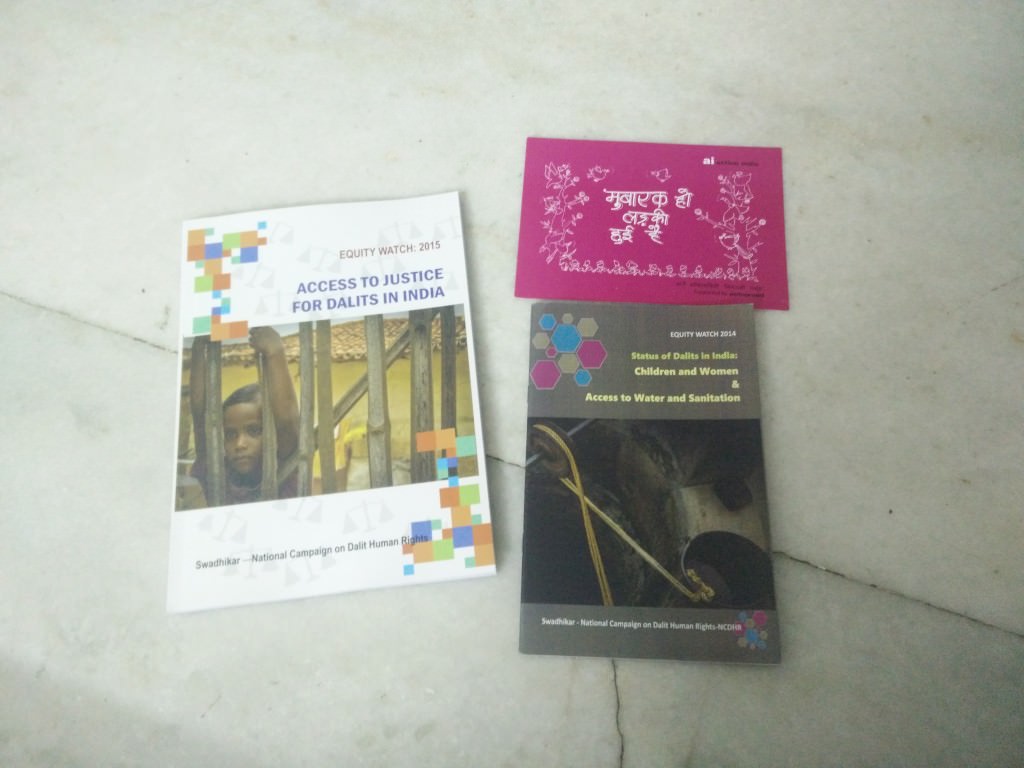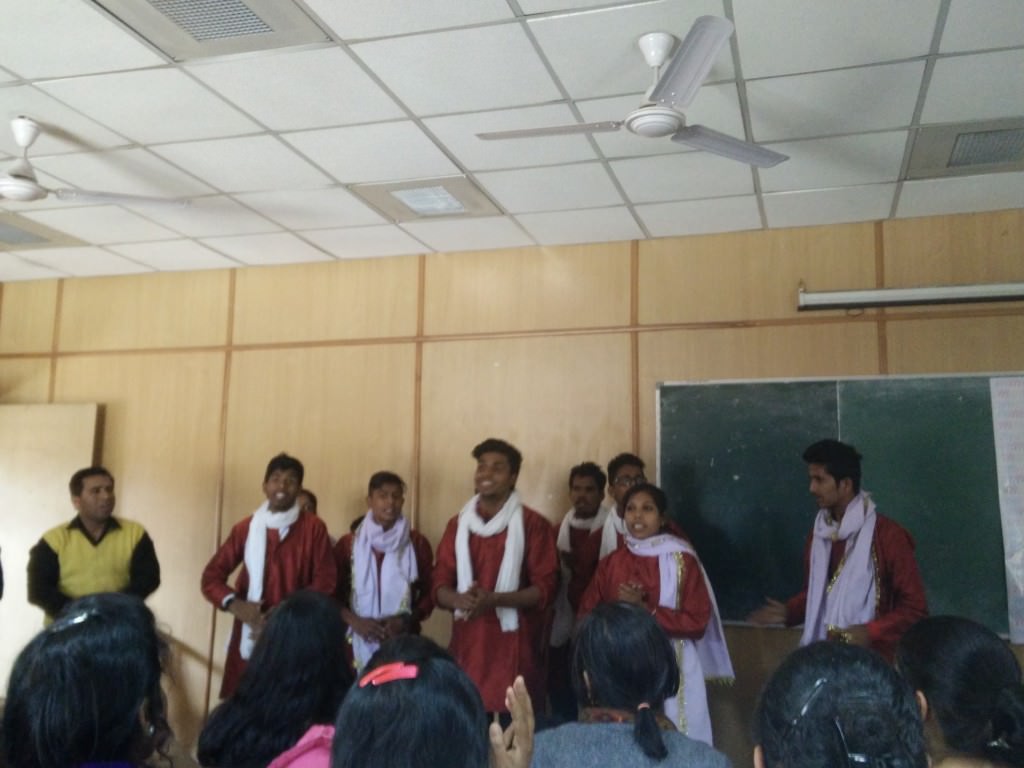One of the very first things that caught my eye the moment I entered the Gender Mela were the many stalls put up there by various organisations. The first stall that I stopped by was by ActionAid India which had some interesting and colourful sketches dealing with issues like domestic violence and consent. Their vibrant pink stickers that said “Mubarak ho! Beti hui hai” (Congrats! It’s a girl) were particularly attractive and a thoughtful way to challenge the obsession for a boy child over a girl child. Adjacent to that, was the stall by The Kriti Team which had a decent collection of books from various different independent publishing houses by women, Video CDs and a lot of other merchandise by various women’s groups.

Post this; the stall that caught my attention was one by CFAR Youth Express which had some intriguing banners and charts. Talking to the people on the stall I got really interested in their project and decided to attend their session which was lined up for that day. As I entered the room, it was peculiarly filled with middle-aged children, who looked shyly excited, and some women who seemed to be their teachers or mentors. Monica from CFAR opened the session explaining how they conducted a ten-day media monitoring project in three slums of Delhi, namely Saboli Khada, KalyanPuri and Nangal Raya, by collecting news clippings (from Amar Ujala, Dainik Bhaskar and Navbharat Times) related to crimes against women, documenting that data and analysing it with a group of youth. This was their way of indulging the slum youth and elders in discussions about gender-based violence. Aakash from CFAR said that it was really difficult to directly engage with the elders of the slum as they got enraged, so this project was their way to indirectly make way for a dialogue around these issues.
Also read: FII’s campaign on Media representation of Gender-based Violence
A discussion was then opened by Rakhee Bakshi from Women’s Feature Service, Bijaylakshmi Nanda and Babita Verma about various important questions that need to be asked and thought about. For example, the need to understand the discrepancy between reality and the ‘projected’ reality was addressed along with focusing on the way crimes against women are reported. The session was closed with a powerful street play performed by children about domestic violence; covering violence by drunk husbands, violence in the name of dowry, financial problems and that faced by elderly people, giving out a resounding message of “Khud bhi samjho, aur samjhaao, gharelu hinsa per rok lagao!” (Educate yourself and others, say no to domestic violence)

What made this session and these children exceptionally special for me was their determination and a reassurance that the Indian feminist movement is not just limited to urban women but also reaching to people who are most affected by patriarchy, giving back to them the agency they have been denied. However, a general and disappointing observation was the absence of college students from that session as opposed to other sessions, which was a reminder for the need to bridge this gap between the urban and the rural in order for a unified voice.
Another session that strikingly brought to light this intersectionality of women’s movements was the one conducted by National Campaign on Dalit Human Rights (NCDHR). Formed with the agenda of bringing to light caste based violence in the wake of the government being dismissive of the same, NCDHR, over the time, also found itself involved in advisory work because of resistance from the government. They then collaborated with other human rights groups. After this brief introduction by Abhay Xaxa, Dyuti, one of the researchers at NCDHR, started the discussion by simply (yet powerfully) asking the audience what caste is according to them. And from there, with the help of PowerPoint slides, she expanded to how we are always taught to believe that caste is a simple hierarchisation and most of us grow up believing that farce.

After Dyuti, Nidhin Shobhana explained how there is an aspect of the division of occupation and as one keeps going down the hierarchy, the option of ‘choosing’ an occupation for oneself also sees a decreasing trend. He then explained how marriages in most Indian cultures are supposed to be within the same sub-caste and caste but outside the gotra (that is, ‘exogamy superimposed by endogamy’). And from there, he connected how marriages are a way to control women’s sexuality, which in turn ensures sustenance and reproduction of further caste systems.
Also read: Violence Against Dalit Women: How Caste Intersects With Gender-based Violence
A documentary titled, “I’m Dalit, how are you?” was then screened , highlighting the state of Dalit women, children and men and how they are made to indulge in manual scavenging even till today , despite it being abolished in 1993. The documentary also highlighted how Dalit women are ‘Dalits within Dalits.’

Nidhin Shobhana then talked about the startling statistics representing the access of Dalits to higher education (taking the example of Miranda House) and highlighted how there was a mass capturing of vacant posts in most institutions by the Savarnas, post-independence. He then moved on to discuss the intersectionality and inclusivity of anti-caste movements and activists. Saying “even if we are not affected by caste, we are all beneficiaries of the anti-caste movements,” he reflected on how public utilities are ‘public’ because of anti-caste movements. He explained how Horizontalism, a very significant social relationship, is in opposition to vertical hierarchies and people from different social movements interact; stating the recent #OccupyUGC movement as an example.
It is significant to identify the importance of giving voice to organisations like these through sessions and stalls during events like the Gender Mela in a society where patriarchal systems affect people in more ways than one. It ensures that there is an attack on these very systems from all levels of oppression which in turn leads to a more intersectional, unified and strengthened fight.
Also read the first piece on Gender Mela: Gender Mela: Perspectives On Sexual Minorities
About the author(s)
I work (read, 'write') to stay afloat.



